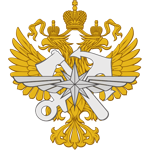Nataliya V. Kuzina. Improving the regulatory framework for VR simulators’ use, regulating the transport safety management system, as a factor in the formation of anti-corruption competencies
UDK: 347.463:621.56.8
Nataliya V. Kuzina - leading researcher of the FSBES the Security Problems Studies Center of the Russian Academy of Sciences, nvkuzina@mail.ru
Abstract. Despite the fact that it was in the field of transport almost a century ago that the method of training vehicle workers on simulators first appeared, in the context of the spread of methods of virtual reality and digitalization, there is still no clear legislative regulation, primarily in terms of the need to use the method of collective crew trainings using virtual and augmented reality technologies. The current paper has analyzed the causes of plane crashes (according to the Interstate Aviation Committee) arising as a result of inadequate interaction of aircraft crew members with automation and ground services, which often appear when the conditioned reflexes collide during an extreme situation. This also occurs as a result of retraining of specialists for the operation of other aircraft models, the lack of joint crew trainings on simulators. Indicative is the fact that in the documents of the Interstate Aviation Committee, as a rule, there is also data on the successful previous certification of the flight and ground personnel, whose actions caused the accident. In the context of a shortage of personnel in private and regional airlines, unfortunately, it is necessary to state the fact that obtaining documents confirming the competence of pilots is usually a result of the corruption schemes. It is necessary to legislatively consolidate for transport workers’ training the necessity of team training methods using virtual reality (VR), which will bring the work of the team as close as possible to various extreme situations, allow them to ‘feather in’, and also prevent corruption in assessing competencies and obtaining admission to transport activities (in particular, permission to fly).
Keywords: virtual reality; driving a vehicle; aircraft crew; team training technologies; automated flight control systems; collision of conditioned reflexes; psychology of extreme situations.
References:
- Sovershenstvovaniye professional'noy podgotovki letnogo i dispetcherskogo sostavov [Improvement of professional training of flight and dispatching personnel] / G. V. Kovalenko [i dr.] ; pod redaktsiyey G. A. Kryzhanovskogo. — Moskva : Transport, 1996.
- Aydarkin, D. V. Razrabotka i primeneniye avtomatizirovannykh sistem dlya professional'noy podgotovki letnogo sostava grazhdanskoy aviatsii : monografiya [Development and application of automated systems for professional training of civil aviation flight personnel]. — Ul'yanovsk : UVAU GA, 2014.
- Guziy, A. G. Metodologiya sinteza i korrektsii «piramidy riska» v samoletnom segmente kommercheskoy aviatsii Rossii [Methodology of synthesis and correction of the "risk pyramid" in the aircraft segment of commercial aviation in Russia] / A. G. Guziy, A. M. Lushkin, A. V. Fokin // Nauchnyy vestnik MGTU GA. ― 2018. ― № 4. — S. 8—16.
- Kuklev, Ye. A. Avtomatizirovannaya sistema monitoringa i kontrolya poletov vozdushnykh sudov po kriteriyu priyemlemogo riska na osnove upravleniya bazami dannykh [Automated system for monitoring and control of aircraft flights based on the criterion of acceptable risk based on database management] / Ye. A. Kuklev // Nauchnyy vestnik MGTU GA. ― 2007. ― № 122. — S. 37—44.
- Konoval'chik, A. P. Primeneniye superkomp'yuternykh tekhnologiy dlya issledovaniya aviatsionnykh katastrof [Application of supercomputer technologies for the study of aviation accidents] / A. P. Konoval'chik, M. V. Malyshevskiy // Vestnik Kontserna VKO Almaz-Antey. ― 2016. ― № 1 (16). — S. 114—125.
- Lushkin, A. M. Metodologiya veroyatnostnogo otsenivaniya tekushchego urovnya avariynosti po rezul'tatam faktornogo analiza aviatsionnykh sobytiy [Methodology of probabilistic assessment of the current level of accidents based on the results of factor analysis of aviation events] / A. M. Lushkin // Nauchnyy vestnik MGTU GA. ― 2015. ― № 218 (8). — S. 24—28.
- Drozdetskikh, I. S. Obrazovatel'naya sreda v sisteme nepreryvnogo obrazovaniya pilotov grazhdanskoy aviatsii [Educational environment in the system of continuous education of civil aviation pilots] / I. S. Drozdetskikh // Vestnik Shadrinskogo gosudarstvennogo pedagogicheskogo universiteta. ― 2019. ― № 3 (43). — S. 111—115.
- Voronin, L. G. Analiz i sintez slozhnykh razdrazhiteley normal'nymi i povrezhdennymi polushariyami golovnogo mozga sobaki: Eksperimental'noye issledovaniye [Analysis and synthesis of complex stimuli by normal and damaged cerebral hemispheres of a dog] / L. G. Voronin ; pod obshchey redaktsiyey Orbeli. — Moskva : 1-ya tip. Gosgeolizdata, 1948.
- Kuznetsov, A. V. Modernizatsiya sistemy professional'noy podgotovki aviatsionnykh spetsialistov v Rossii [Modernization of the system of professional training of aviation specialists in Russia] / A. V. Kuznetsov, YU. V. Kuznetsov // Gumanitarnyye nauki. ― 2016. ― № 2 (34). — S. 48—54.
- Kuzina, N. V. Simulyatsionnoye obucheniye pri podgotovke kadrov vysshey kvalifikatsii i dopolnitel'nom professional'nom obrazovanii: K voprosu o definitsiyakh i strukture protsessa [Simulation training in training highly qualified personnel and additional vocational education: On the question of the definitions and structure of the process] / N. V. Kuzina, L. B. Kuzina, K. T. Sulimov // Sovremennoye obrazovaniye. — 2018. — № 2. — S. 118—139.
- Kuzina, N. V. Neyropsikhologiya na sluzhbe profilakticheskoy meditsiny i standart dispanserizatsii [Neuropsychology at the service of preventive medicine and the standard of clinical examination] / N. V. Kuzina // V mire nauchnykh otkrytiy. — 2016. — № 5 (77). — S. 83―115.
 Transport Law and Security
Transport Law and Security